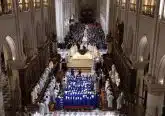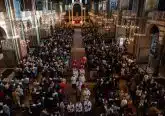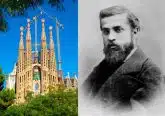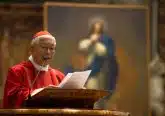Southeast Michigan a bastion for Polish Christmas traditions, rituals

IMAGE: CNS photo/Dan Meloy, The Michigan Catholic
By Dan Meloy
HAMTRAMCK, Mich. (CNS) — Holiday traditions and rituals are a vital part of each family’s Christmas celebration.
When celebrating the birth of Jesus, many Catholic families have their own customs passed down for centuries through the generations, and this is especially true for southeast Michigan’s Polish families.
Polish Christmas traditions center on the “Wigilia,” a family dinner in which the whole family gathers on Christmas Eve to enjoy a meal and time together before going to midnight Mass.
“The Wigilia is the main meal at Christmas Eve with the family,” said Father Miroslaw Frankowski, a priest of the Society of Christ, who is pastor of the predominantly Polish St. Florian Parish in the city of Hamtramck, which is an enclave of Detroit.
“There is always an extra set of silverware in case there is an unexpected guest. Jesus comes to us as the unexpected guest, so the tradition is to be prepared to invite them.”
The Wigilia features 12 meatless dishes, in remembrance of the 12 apostles, and the meals are meatless because animals are given the “night off,” since they were there for the birth of Christ, Father Frankowski told The Michigan Catholic, Detroit’s archdiocesan newspaper.
The meal centers on “Oplatki,” wafers made from flour and water — similar to Communion wafers — which families pass around the table, taking off a piece and eating it while saying well wishes for the coming year.
People from all over the country visit the Polish Art Center in Hamtramck during the Christmas season to buy Oplatki wafers and other items necessary for a proper Polish Christmas, said Joan Bittner, the center’s co-owner.
“We make straw ornaments for the Wigilia,” Bittner said. “The straw is meant to remind you of your ancestry and the spirit of all your ancestors who are with you for Christmas. We also sell hay from the national forest in Poland; the hay is intended to remind you of the manger and humble origins of the Christ.”
On Christmas Eve, the family gathers together to decorate the Christmas tree and cook the food in preparation for the Wigilia. Before the meal starts, the youngest member of the family stands outside, waiting for the first star of the night to appear — signifying Christmas Eve is here and the meal can start.
For Polish families, every aspect of the tradition is rooted in the love of family and the birth of Christ, said Rodney Srodek, owner of Srodek’s Campau Quality Sausage Co. in Hamtramck.
“The entire family is at the dinner, usually it’s three generations,” Srodek said. “In Polish culture, everything is rooted in generations and meals are prepared together. The children watch so one day they can learn how to cook the meals. It’s the tradition of bringing everyone together to take part in all aspects of the meal.”
Srodek’s sells popular Polish items for the Wigilia, including red soup called “barszcz” with mushrooms, “uszka,” which are small dumplings resembling a smaller version of pierogi, and kraut with mushrooms. Freshwater carp is the traditional Polish fish, which Srodek said is the source of a unique tradition in Polish culture.
“The idea is you buy the fish live, and when you kill it, you take a scale and keep it in your wallet as good luck charm. It’s not exactly a Catholic tradition, but it’s a Polish custom,” Srodek said.
After the Wigilia, the family attends midnight Mass in celebration of Christmas. After Mass, families usually go to bed, and then celebrate Christmas Day meal in a traditional American sense.
“During Christmas Day, a lot of people also go to church during the day,” Father Frankowski said. “Then we have a big meal with meat, making it a great celebration where we invite neighbors and relatives to come into the house.
“Singers dress in all kinds of costumes in the evening, singing carols or acting out the Nativity scene. The celebrations continue past Dec. 25, and through the whole Christmas season, until the feast of the Baptism of our Lord.”
Other Polish Christmas tradition include “Szopki,” Nativity scenes and churches made out of foil, paper and candy wrappers.
Every family has its own traditions when it comes to Christmas, each with their own meaning.
In metro Detroit, Polish-American families celebrate with multiple generations around the dinner table, carrying out the same traditions passed down to them from their ancestors centuries ago.
“When the Polish came over, many were forced to assimilate into American culture,” said Magdalena Srodek, Rodney’s sister who works in the Hamtramck shop. “The biggest thing is the loss of language — it’s why you see people who are older start taking Polish classes; you get a sense of nostalgia for that lost sense of culture and history.
“The loss of language may happen, but people will never abandon their food. It’s been passed down for generations, and it’s not going away, no matter where people may live.”
– – –
Meloy writes for The Michigan Catholic, newspaper of the Archdiocese of Detroit.
– – –
Copyright © 2016 Catholic News Service/U.S. Conference of Catholic Bishops. www.catholicnews.com. All rights reserved. Republishing or redistributing of CNS content, including by framing or similar means without prior permission, is prohibited. You may link to stories on our public site. This copy is for your personal, non-commercial use only. To request permission for republishing or redistributing of CNS content, please contact permissions at [email protected].













